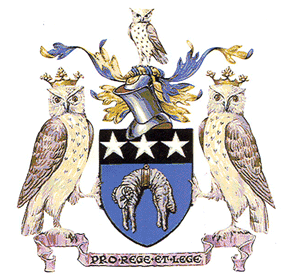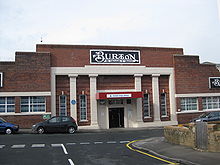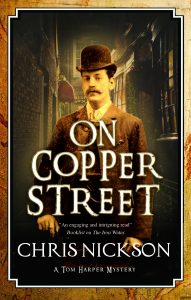Last month, in Part One of Pulling the Wool Over Leeds, Chris Nickson looked at how the fortunes of Leeds were built on the wool trade. But fortunes go in cycles. They rise…and they fall. Part Two tells us more.
 In the case of Leeds, they rose again, at the other end of the cloth process. For a number of reasons, during the 1800s, the sale of cloth in Leeds declined, and it stopped being the main employer in the town.
In the case of Leeds, they rose again, at the other end of the cloth process. For a number of reasons, during the 1800s, the sale of cloth in Leeds declined, and it stopped being the main employer in the town.
By the 1840s, however, something new had arrived, ready to take over: ready-made, off-the-peg clothing. It seems an obvious idea to us, yet before that time, if you wanted new, it was strictly bespoke, everything quite literally hand-sewn. Then John Barran, later Lord Mayor of Leeds (and the man who arranged the purchase of what’s now Roundhay Park) came along with the idea of ready-made clothing for men. He was a tailor, and in his shop at 1, Briggate, opened his ‘Emporium of Fashion’ in 1848; men could walk in and then walk out in brand-new clothes. A couple of years later, a Jewish immigrant named Herman Friend became a worker for Barran – not in his tailoring works, because Barran would not employ Jews there – but as an outworker.
Friend set up a workshop in the old Leeds workhouse on Vicar Lane, employing other immigrants, and divided the tailoring process into a series of steps. Anyone could quickly learn one of these steps and focus solely on that. It was, really, the first production line, a sweatshop, the first of many in the area of Leeds known as the Leylands.
Barran was an innovator in many ways, realising the potential of the sewing machine when it arrived, and the possibilities of the bandsaw for exactly cutting through many layers of cloth at once. His innovations were able to provide uniforms in mass numbers for the army and other services at a reasonable price. Business boomed, and he opened factories on Park Row and then in St. Paul’s House. By the beginning of the 20th century he had well over 1,000 employees.
 It wasn’t simply Barran who was doing well. The entire ready-made clothing industry was booming, with over 100 companies in Leeds alone by the start of World War I, employing around one-quarter of the local female workforce. Burton’s quickly eclipsed Barran’s, opening a factory in Burmantofts that would employ 16,000 people. Burton’s covered production and sales to the point where the company reportedly made 20 per cent of the clothing worn by British men. Along with Hepworths and the Fifty-Shilling Tailor, it was clothing everyone could afford, a true revolution in menswear, and they took care of the entire process, including alterations. Each firm produced the clothing they sold.
It wasn’t simply Barran who was doing well. The entire ready-made clothing industry was booming, with over 100 companies in Leeds alone by the start of World War I, employing around one-quarter of the local female workforce. Burton’s quickly eclipsed Barran’s, opening a factory in Burmantofts that would employ 16,000 people. Burton’s covered production and sales to the point where the company reportedly made 20 per cent of the clothing worn by British men. Along with Hepworths and the Fifty-Shilling Tailor, it was clothing everyone could afford, a true revolution in menswear, and they took care of the entire process, including alterations. Each firm produced the clothing they sold.
Indeed, between them, they made off-the-peg the norm rather than something to be looked down upon. Tailoring continued, of course, but its very nature meant that it was priced out of the mass market.
After World War II, demand declined – fewer uniforms were needed, and those leaving the service were all given demob suits – while the established companies couldn’t compete with the cost of clothing made abroad. The trade went into a slow tailspin, with employment in the clothing sector dropping year by year – something echoed everywhere in manufacturing in Britain. By the 1980s, to all intents and purposes it was over. Leeds’ second stint as the wool capital of the world had ended.
 Chris Nickson is the author of several historical crime novels set in Leeds. His latest, On Copper Street, the fifth in his Inspector Tom Harper series, takes place in 1895. Named one of the best crime novels of the last 12 months by the US Booklistonline. You can order it here.
Chris Nickson is the author of several historical crime novels set in Leeds. His latest, On Copper Street, the fifth in his Inspector Tom Harper series, takes place in 1895. Named one of the best crime novels of the last 12 months by the US Booklistonline. You can order it here.
The day after his release from prison, petty criminal Henry White is found stabbed to death at his terraced home on Copper Street. Pursuing enquiries in a neighbourhood where people are suspicious of strangers and hostile to the police, DI Tom Harper and his men find the investigation hard going. If anyone knows anything about Henry White’s murder or the robbery that landed him in gaol in the first place they are unable or unwilling to say.
At the same time, acid is thrown over a young boy in a local bakery in a seemingly unprovoked attack.
Praying for a breakthrough, Harper knows that he must uncover the motive in each case if he is to have any chance of catching the culprits. One thing he is certain: if he doesn’t find answers soon, more deaths will follow.
